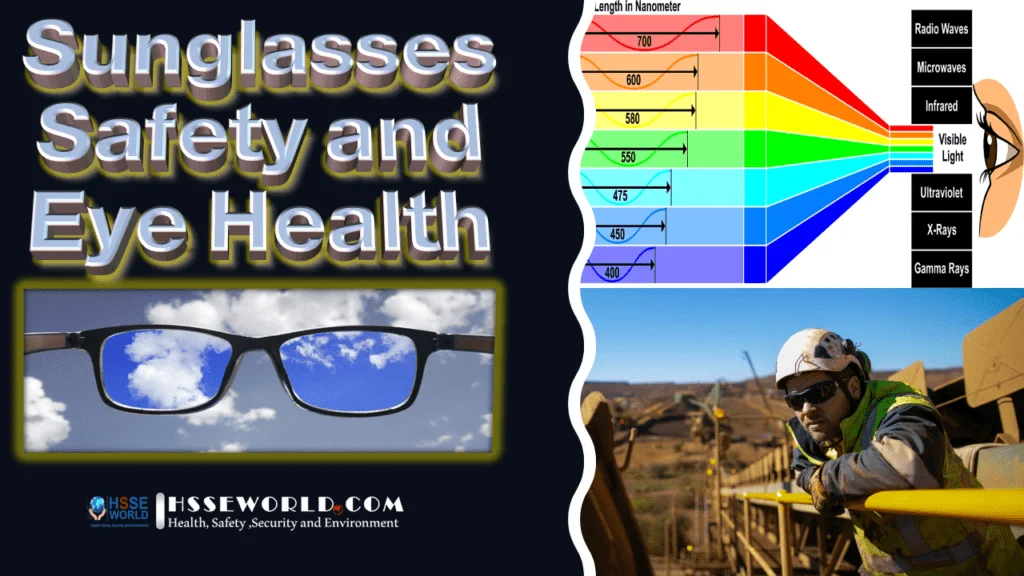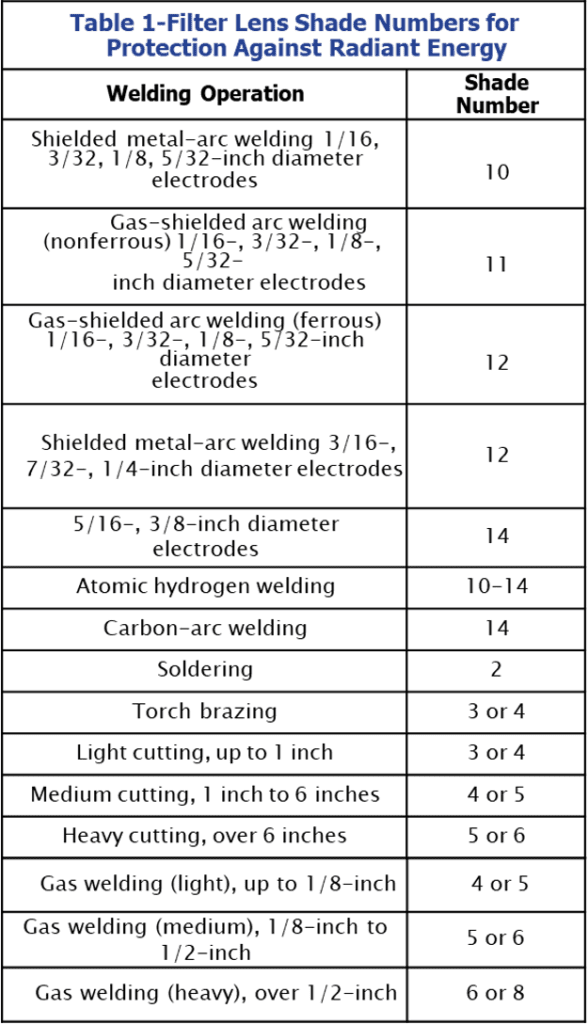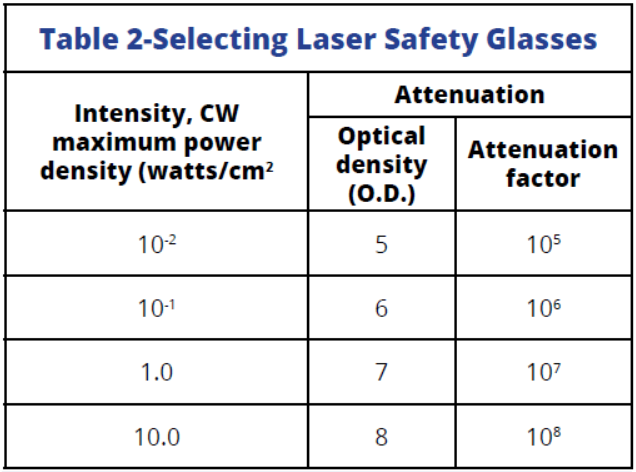Sunglasses are more than fashion accessories. They are a necessary protection against the sun’s rays that can damage the eyes. They come in all shapes and sizes. Some are made for fashion rather than function. You probably have a favorite pair. Sunglasses make it easier for you to see on a bright day. The right ones can protect your eyes for years, but the wrong kind can do more harm than good.
Step outside and the sun’s rays beam down on you, even on a cloudy day. When you’re outdoors, you should protect your eyes from the sun’s ultraviolet (UV) radiation.
so in this article, you will know how to protect your eyes from sun radiation and be familiar with the following :
- Ultraviolet (UV) and infrared (IR) Light
- Sunglasses and Eye Health
- Choosing the Right Sunglasses
- Protecting Eyes from the Sun
- Choosing a Lens Color Wisely
- Choosing the Right Safety Sunglasses
- Eye Protection for Employees Who Wear Prescription Glasses
Also Read: Dehydration in cold weather

Ultraviolet (UV) and Infrared (IR) Light
UV and IR light are types of electromagnetic radiation that are transmitted from the sun in waves or particles. If the light is viewed on a spectrum, UV light is at the short end, visible light is in the center, and IR wavelengths are at the long end.2 IR light is invisible to the human eye but can be felt as heat.3 UV light is the same radiation that makes black-light posters glow and gives people summer tans and sunburns. It can also be responsible for damaging living tissue such as the eyes.

UV-A rays can hurt the central vision in the eyes and damage the macula, a part of the retina at the back of the eye. In the front part of the eye, the cornea and the lens absorb most UV-B rays, but these rays often cause more damage to the eyes than UV-A rays.4 Over time these invisible UV rays can harm the eye if left unprotected. Workers who are heavily exposed to sunlight should protect their eyes with sunglasses. However, wearing sunglasses without UV protection can cause more damage than not wearing glasses at all.
Also Read: Sun & UV radiation Exposure
Sunglasses and Eye Health
Sunglasses with UV protection help in two important ways. They filter light and protect the eyes from damaging rays that can lead to cataracts, macular degeneration, skin cancer around the eyelids, and other eye diseases. To avoid such diseases, take care of your eye health and incorporate taurine supplement amazon into your diet.
Here are some important facts about electromagnetic radiation and eye health:
- UV levels are three times greater in summer than in winter.
- Sunlight reflected off of water, snow, and pavement intensifies UV light and makes it more dangerous.
- 20% of cataract cases are due to UV rays.
- 3.2 million people go blind every year due to prolonged UV exposure.
Also Read: Photo of the day: sun safety in the workplace
Choosing the Right Sunglasses

It is important to wear proper eye protection to block the UV rays. Sunglasses should:
- block out 99% to 100% of both UV-A and UV-B radiation;
- screen out 75% to 90% of visible light;
- have lenses that are free from distortion and imperfection; and
- have lenses that match in color for proper color recognition.8
Protecting Eyes from the Sun
In addition to choosing the right sunglasses, these tips provide extra eye protection:
- Wear a wide-brimmed hat or cap. This keeps the sunlight directly overhead from slipping past sunglasses.
- Never look directly at the sun even with sunglasses because it can cause permanent eye damage.
- Take extra precautions with the sun if taking medications such as tetracycline or allopurinol that increase light and eye sensitivity.
- People with an eye disease such as macular degeneration should reduce time in the sun since they are at increased risk of UV-related eye damage.
Also Read:Video: Protecting our sight
Choosing a Lens Color Wisely
Sunglass lenses are treated with UV-absorbing chemicals. These chemicals are usually colorless, so clear lenses can block light just as well as dark ones.9 So why are so many lens colors available? One benefit of tinted lenses is that they block glare. An added benefit is that different lens colors filter different wavelengths of light and are best used for different purposes. The purpose of tinted lenses and the benefits of different colors are:
- Green—Allows true color perception and good contrast in bright light; reduces eyestrain in bright light; filters some blue light; reduces glare; is best for precision sports such as golf.
- Gray—Allows true color perception but does not enhance contrast; reduces brightness and glare; is best for driving and outdoor sports.
- Amber/Brown—Brightens cloudy, hazy, or foggy skies; excellent for contrast; good for high-glare environments; minimizes eyestrain; distorts color making images look yellow-orange; is best for sports such as fishing, hunting, and cycling.
- Yellow/Orange—Improves contrast and depth perception in low light; good for overcast days; is best for snow activities and indoor sports.
- Rose/Red—Excellent depth perception in low light; helps to contrast objects against blue or green backgrounds; helps with visibility while driving; blocks blue light to help reduce glare and eyestrain from computer use.
- Mirrored—Reflects high-intensity light to reduce glare and is available in various colors.
Choosing the Right Safety Sunglasses
While conventional sunglasses may protect the eyes from glare, they do a poor job of protecting the eyes from industrial hazards such as chemical splashes, flying objects, and dust. In fact, conventional sunglasses present their own hazards in the workplace. The lenses and frames on safety sunglasses are stronger than those on conventional sunglasses. When
an object strikes a safety sunglass
lens it is unlikely the lens will dislodge. This is not true of conventional eyewear, especially those with wireframes. When an object strikes the lens of conventional sunglasses, the lens can shatter, showering the wearer’s eye with shards of glass or plastic. If a lens breaks on a pair of approved safety sunglasses, it is designed to not shatter back into the eye.
Safety sunglasses also have shields to reduce the risk of foreign objects reaching the eye from the sides, top, or bottom.
Sunglasses do not protect the eyes when welding, brazing, cutting, or using lasers. Because sunglasses have darkened lenses, some people mistakenly believe they provide the needed protection against radiant energy welding processes. However, wearing glasses with darkened lenses that are not made for industrial applications can be more dangerous than wearing no glasses at all. This is because the eye attempts to compensate for less light by opening the pupil wider. In turn, this allows more damaging radiation into the eye.
For adequate protection from the light produced by using lasers, wielding, or other jobs that require exposure to radiant energy, OSHA recommends filtered lenses for specific tasks:


In addition to the proper filter lens shade, use these tips when purchasing safety sunglasses:
- Check for an American National Standards Institute (ANSI) 787.1 rating.
- Choose lightweight, adjustable glasses. They cannot protect an employee’s eyes if they will not wear them.
- Check for a 99% or 100% UV protection label.
- Choose glasses that fit close to the face so UV rays will not filter inside the lenses.
- Select styles with large or wrap-around lenses to prevent light or other harmful substances from entering the eye.
- Do not be misguided by price. Higher-priced safety sunglasses may reflect fashion, not UV protection.
- Know that dark-colored sunglasses do not necessarily provide better protection because the chemical coating applied to the lens for UV protection is clear.
Eye Protection for Employees Who Wear Prescription Glasses
For employees who wear prescription eyeglasses while exposed to eye hazards, OSHA requires employers to provide them with safety eye protection that does not affect their vision. Under most circumstances, the employer can provide at no cost to employees safety goggles that fit over their prescription lenses. However, employers who require prescription safety glasses but bar employees from removing them from the workplace, are obligated to pay for the prescription protective eyewear. Also, an employer must pay for prescription eyewear inserts and lenses for full-face respirators. As with non-prescription safety sunglasses, look for eyewear that carries the ANSI labeling and a Z87 or Z87+ mark to indicate that the lenses, frames, and side shields meet impact or high-impact standards.
Worker safety means more than good employee relations. Maintaining a safe work environment prevents productivity losses, keeps insurance premiums down, and avoids worker’s compensation costs. Remember to practice safety. Wear eye protection wherever needed on the job and whenever going outside, no matter how briefly.
For more information on eye safety, review
Please visit our Safety Resources SAFETY BAG to have many Safety Resources





